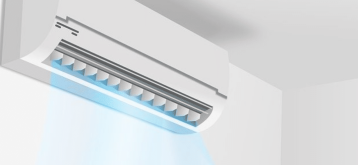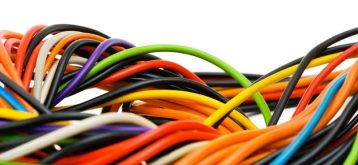How to Identify Electrical Hazards in Your Home and Workplace
Advice
How to Identify Electrical Hazards in Your Home and Workplace
Electricity powers our daily lives, but when not managed properly, it can become a serious safety risk. Electrical hazards can cause fires, shocks, and even life-threatening injuries. Whether at home or in the workplace, identifying potential dangers before they lead to an accident is crucial. In this guide, we’ll walk you through the most common electrical hazards and how to spot them before they become a bigger problem.
1. Overloaded Power Points and Extension Cords
The Danger: Plugging too many devices into a single outlet can cause overheating, leading to electrical fires. Extension cords are also not meant for permanent use and can become frayed or overloaded over time.
Warning Signs:
- Warm or hot power points
- Flickering lights when plugging in new appliances
- Power boards with multiple high-wattage devices plugged in
Prevention Tip: Use power boards with built-in surge protection and avoid daisy-chaining multiple extension cords. If you frequently need extra outlets, consider having a qualified electrician install additional power points.
2. Exposed or Damaged Wiring
The Danger: Wires can deteriorate over time due to age, rodent damage, or physical wear and tear. Exposed wires increase the risk of electric shocks and fires.
Warning Signs:
- Frayed or cracked insulation around wires
- Sparks when plugging or unplugging devices
- Buzzing sounds from outlets or switches
Prevention Tip: Never attempt DIY electrical repairs. If you spot damaged wiring, call a licensed electrician immediately to replace or repair it.
3. Water and Electricity Don’t Mix
The Danger: Water is a strong conductor of electricity, and contact between the two can result in severe shocks or electrocution.
Warning Signs:
- Electrical outlets or switches near sinks or bathtubs without protection
- Wet hands or surfaces near electrical appliances
- Water leaks near electrical wiring or outlets
Prevention Tip: Always dry your hands before handling electrical appliances. If you notice water near electrical outlets, shut off power at the main switch and call an electrician to assess the risk.
4. Flickering or Dimming Lights
The Danger: While flickering lights might seem like a minor annoyance, they can be a sign of a larger electrical issue, such as loose wiring or an overloaded circuit.
Warning Signs:
- Lights dimming when you use large appliances
- Frequent bulb burnouts
- Unexplained flickering
Prevention Tip: If changing the bulb doesn’t fix the issue, have an electrician inspect your wiring and electrical panel to ensure it’s not an overloaded circuit or a loose connection.
5. Buzzing or Crackling Sounds Hazard
The Danger: Electrical systems should operate silently. Any unusual buzzing, crackling, or sizzling sounds from outlets, switches, or electrical panels could indicate loose wiring or faulty components.
Warning Signs:
- Persistent buzzing or humming from appliances or outlets
- Crackling sounds when flipping switches
- Burning smell from electrical fixtures
Prevention Tip: Shut off power to the affected area and contact a professional electrician immediately. Ignoring these sounds could lead to serious electrical failures or fires.
6. Outdated or Faulty Electrical Panels
The Danger: Older electrical panels may not be equipped to handle modern power demands, increasing the risk of overheating and electrical failures.
Warning Signs:
- Frequently tripping circuit breakers
- Outdated fuse boxes instead of modern circuit breakers
- Rust or corrosion around the electrical panel
Prevention Tip: If your home or business has an old fuse box or an outdated electrical panel, consider upgrading to a modern system to improve safety and efficiency.
7. DIY Electrical Work Hazards
The Danger: Unlicensed electrical work is illegal in many places and can result in dangerous wiring mistakes that increase the risk of fires and electrocution.
Warning Signs:
- Exposed wires from previous DIY attempts
- Non-standard wiring setups
- Electrical shocks when using appliances
Prevention Tip: Always hire a licensed electrician for any electrical work. Attempting DIY repairs can be extremely dangerous and could void home insurance coverage.
Electrical hazards can be found in every home and workplace, but with regular inspections and proper maintenance, you can significantly reduce the risk of accidents. If you suspect any of the warning signs mentioned above, don’t wait—reach out to a professional electrician for an inspection.
Want to ensure your home or business is electrically safe?
Contact us today for a safety assessment and expert solutions!
Suggested Articles

Can Good Air Conditioning Help You…
Struggling to get a good night’s sleep? Your air conditioner might just be the secret weapon you…
Read More
How to Store Cords: Safe and…
Messy cords aren’t just frustrating — they can also be unsafe. Tangled extension leads, power cords and chargers…
Read More
The Benefits of LED Lighting: Why…
The Benefits of LED Lighting: Why You Should Make the Switch When it comes to lighting your home or business,…
Read More